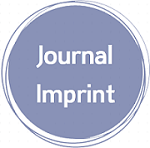Effect of Ivabradine in Controlling Heart Rate in Patients with Sepsis and Septic Shock: Randomized Control Trails
Downloads
Doi: 10.28991/SciMedJ-2023-05-01-04
Full Text: PDF
Downloads
Randolph, A. G., & McCulloh, R. J. (2014). Pediatric sepsis: Important considerations for diagnosing and managing severe infections in infants, children, and adolescents. Virulence, 5(1), 172–182. doi:10.4161/viru.27045.
Datta, P. K., Rewari, V., Ramachandran, R., Singh, P. M., Ray, B. R., Aravindan, A., Seth, S., Parakh, N., & Trikha, A. (2021). Effectiveness of enteral ivabradine for heart rate control in septic shock: A randomised controlled trial. Anaesthesia and Intensive Care, 49(5), 366–378. doi:10.1177/0310057X211009913.
Golhar, S., Madhura, A., Chauhan, U., & Nayak, A. (2021). Utility of red cell distribution width (RDW) in diagnosis and prognosis of early-onset neonatal sepsis in term neonates. SciMedicine Journal, 3(3), 257-264. doi: 10.28991/SciMedJ-2021-0303-7.
Boller, M., & Fletcher, D. J. (2023). Postcardiac arrest care. Small Animal Critical Care Medicine, 30–36, Saunders, London, United Kingdom. doi:10.1016/b978-0-323-76469-8.00014-9.
Lazzarin, T., Tonon, C. R., Martins, D., Fávero, E. L., Baumgratz, T. D., Pereira, F. W. L., Pinheiro, V. R., Ballarin, R. S., Queiroz, D. A. R., Azevedo, P. S., Polegato, B. F., Okoshi, M. P., Zornoff, L., Rupp de Paiva, S. A., & Minicucci, M. F. (2022). Post-Cardiac Arrest: Mechanisms, Management, and Future Perspectives. Journal of Clinical Medicine, 12(1), 259. doi:10.3390/jcm12010259.
Badrinath, K., Shekhar, M., Sreelakshmi, M., Srinivasan, M., Thunga, G., Nair, S., Nileshwar, K., Balakrishnan, A., & Kunhikatta, V. (2018). Comparison of various severity assessment scoring systems in patients with sepsis in a tertiary care teaching hospital. Indian Journal of Critical Care Medicine, 22(12), 842–845. doi:10.4103/ijccm.IJCCM_322_18.
Kimura, K., Kimura, T., Ishihara, M., Nakagawa, Y., Nakao, K., Miyauchi, K., Sakamoto, T., Tsujita, K., Hagiwara, N., Miyazaki, S., Ako, J., Arai, H., Ishii, H., Origuchi, H., Shimizu, W., Takemura, H., Tahara, Y., Morino, Y., … Iino, K. (2019). JCS 2018 Guideline on Diagnosis and Treatment of Acute Coronary Syndrome. Circulation Journal, 83(5), 1085–1196. doi:10.1253/circj.cj-19-0133.
Reichart, D., Magnussen, C., Zeller, T., & Blankenberg, S. (2019). Dilated cardiomyopathy: from epidemiologic to genetic phenotypes: A translational review of current literature. Journal of Internal Medicine, 286(4), 362–372. doi:10.1111/joim.12944.
Hrishi, A. P., Lionel, K. R., & Prathapadas, U. (2019). Head rules over the heart: cardiac manifestations of cerebral disorders. Indian journal of critical care medicine: peer-reviewed, official publication of Indian Society of Critical Care Medicine, 23(7), 329. doi:10.5005/jp-journals-10071-23208.
Lescroart, M., Pequignot, B., Kimmoun, A., Klein, T., & Levy, B. (2022). Beta-blockers in septic shock: What is new? Journal of Intensive Medicine, 2(3), 150–155. doi:10.1016/j.jointm.2022.01.004.
Bakker, J., Kattan, E., Annane, D., Castro, R., Cecconi, M., De Backer, D., Dubin, A., Evans, L., Gong, M. N., Hamzaoui, O., Ince, C., Levy, B., Monnet, X., Ospina Tascón, G. A., Ostermann, M., Pinsky, M. R., Russell, J. A., Saugel, B., Scheeren, T. W. L., … Hernandez, G. (2021). Current practice and evolving concepts in septic shock resuscitation. Intensive Care Medicine, 48(2), 148–163. doi:10.1007/s00134-021-06595-9.
Zhang, J., Chen, C., Liu, Y., Yang, Y., Yang, X., & Yang, J. (2022). Benefits of esmolol in adults with sepsis and septic shock: An updated meta-analysis of randomized controlled trials. Medicine, 101(27), 101. doi:10.1097/MD.0000000000029820.
Gammone, M. A., Riccioni, G., Massari, F., & D’Orazio, N. (2020). Beneficial effect of ivabradine against cardiovascular diseases. Frontiers in Bioscience - Scholar, 12(1), 161–172. doi:10.2741/S545.
Larson, J., Rich, L., Deshmukh, A., Judge, E. C., & Liang, J. J. (2022). Pharmacologic Management for Ventricular Arrhythmias: Overview of Anti-Arrhythmic Drugs. Journal of Clinical Medicine, 11(11), 3233. doi:10.3390/jcm11113233.
Giannoni, A., Gentile, F., & Borrelli, C. (2023). Pharmacological Treatment of Ischemic Heart Disease. Ischemic Heart Disease. Springer, Cham, Switzerland. doi:10.1007/978-3-031-25879-4_19.
Nedoshivin, A., Petrova, P. T. S., & Karpov, Y. (2022). Efficacy and Safety of Ivabradine in Combination with Beta-Blockers in Patients with Stable Angina Pectoris: A Systematic Review and Meta-analysis. Advances in Therapy, 39(9), 4189–4204. doi:10.1007/s12325-022-02222-1.
Lowry, J. E. (2021). Exploring the force-frequency relationship in people with chronic heart failure. Ph.D. Thesis, University of Leeds, Leeds, United Kingdom.
Tse, S., & Mazzola, N. (2015). Ivabradine (Corlanor) for heart failure: the first selective and specific IF inhibitor. Pharmacy and Therapeutics, 40(12), 810.
Mengesha, H. G., Weldearegawi, B., Petrucka, P., Bekele, T., Otieno, M. G., & Hailu, A. (2017). Effect of ivabradine on cardiovascular outcomes in patients with stable angina: meta-analysis of randomized clinical trials. BMC Cardiovascular Disorders, 17(1). doi:10.1186/s12872-017-0540-3.
Hotchkiss, R. S., Moldawer, L. L., Opal, S. M., Reinhart, K., Turnbull, I. R., & Vincent, J.-L. (2016). Sepsis and septic shock. Nature Reviews Disease Primers, 2(1), 1-21. doi:10.1038/nrdp.2016.45.
Meyer, M., Rambod, M., & LeWinter, M. (2018). Pharmacological heart rate lowering in patients with a preserved ejection fraction—review of a failing concept. Heart Failure Reviews, 23(4), 499–506. doi:10.1007/s10741-017-9660-1.
Bedet, A., Voiriot, G., Ternacle, J., Marcos, E., Adnot, S., Derumeaux, G., & Dessap, A. M. (2020). Heart rate control during experimental sepsis in mice comparison of ivabradine and β-blockers. Anesthesiology, 132, 321–329. doi:10.1097/ALN.0000000000003045.
Tsai, M.-L., Lin, S.-I., Kao, Y.-C., Lin, H.-C., Lin, M.-S., Peng, J.-R., Wang, C.-Y., Wu, V. C.-C., Cheng, C.-W., Lee, Y.-H., Hung, M.-J., & Chen, T.-H. (2023). Optimal Heart Rate Control Improves Long-Term Prognosis of Decompensated Heart Failure with Reduced Ejection Fraction. Medicina, 59(2), 348. doi:10.3390/medicina59020348.
Bocchi, E. A., Rassi, S., & Guimarães, G. V. (2018). Safety profile and efficacy of ivabradine in heart failure due to Chagas heart disease: a post hoc analysis of the SHIFT trial. ESC Heart Failure, 5(3), 249–256. doi:10.1002/ehf2.12240.
Böhm, M., Borer, J. S., Camm, J., Ford, I., Lloyd, S. M., Komajda, M., Tavazzi, L., Talajic, M., Lainscak, M., Reil, J. C., Ukena, C., & Swedberg, K. (2015). Twenty-four-hour heart rate lowering with ivabradine in chronic heart failure: Insights from the SHIFT Holter substudy. European Journal of Heart Failure, 17(5), 518–526. doi:10.1002/ejhf.258.
Fox, K. A. A., Steg, P. G., Eagle, K. A., Goodman, S. G., Anderson, F. A., Granger, C. B., Flather, M. D., Budaj, A., Quill, A., Gore, J. M., & GRACE Investigators, for the. (2007). Decline in Rates of Death and Heart Failure in Acute Coronary Syndromes, 1999-2006. JAMA, 297(17), 1892. doi:10.1001/jama.297.17.1892.
Swedberg, K., Komajda, M., Böhm, M., Borer, J. S., Ford, I., Dubost-Brama, A., Lerebours, G., & Tavazzi, L. (2010). Ivabradine and outcomes in chronic heart failure (SHIFT): a randomised placebo-controlled study. The Lancet, 376(9744), 875–885. doi:10.1016/s0140-6736(10)61198-1.
De Santis, V., Frati, G., Greco, E., & Tritapepe, L. (2014). Ivabradine: a preliminary observation for a new terapeutic role in patients with multiple organ dysfunction syndrome. Clinical Research in Cardiology, 103(10), 831–834. doi:10.1007/s00392-014-0722-2.
- This work (including HTML and PDF Files) is licensed under a Creative Commons Attribution 4.0 International License.












